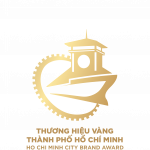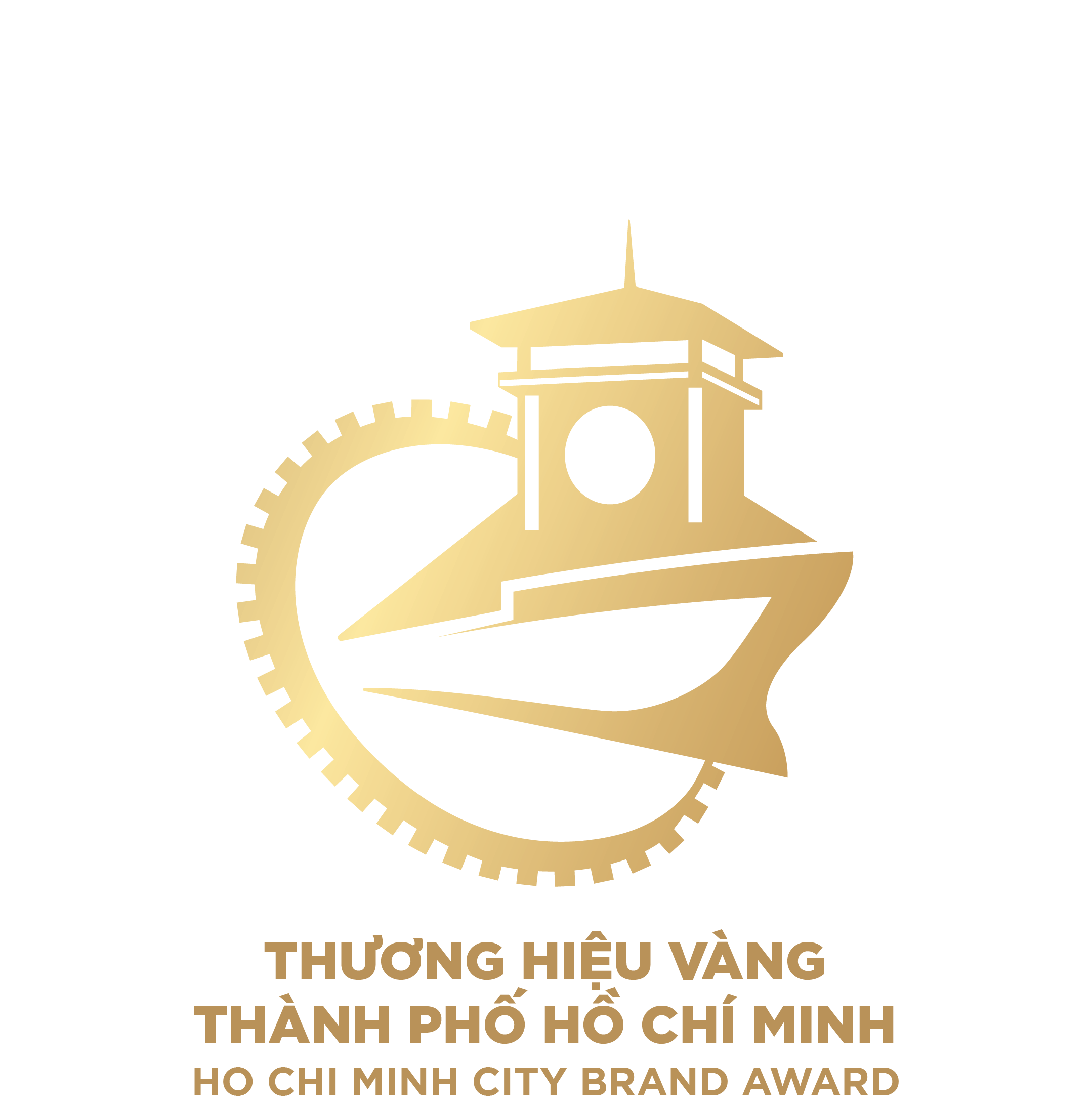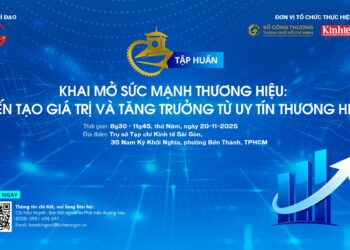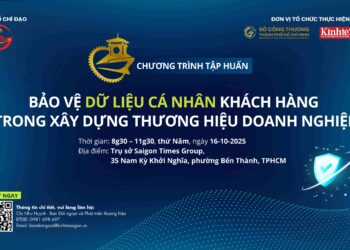In today’s competitive business environment, digital transformation and the integration of AI tools tailored to specific business needs are critical for achieving sales targets.
“Focus on the numbers,” a sales director recalls being urged by investors and management before every meeting. To meet these demands, her company has heavily invested in building an in-house marketing and digital team while also partnering with a digital agency. Together, they use specialized tools and reports to monitor social media, promote the brand, and track competitors.
Unfamiliar territory for Vietnamese businesses
Over the past two years, AI tools such as ChatGPT, Gemini, and Copilot have gained popularity for tasks like generating text-based images, designing logos, and professional photo editing.
However, according to experts, these tools only scratch the surface when it comes to meeting the complex needs of businesses.
“These are merely personalized tools, insufficient for addressing critical business needs like accessing market insights, identifying potential customers, or managing real-time inventory,” said Nguyen Ngoc Tram, CEO of U.S.-based IPGEEKLAB. Speaking during a January 3, 2025, panel discussion on “Leveraging AI and Global Certified Standards for Foreign Market Entry,” Tram emphasized the importance of selecting the right tools.
“To succeed, businesses must invest time in research, be prepared to spend, and choose solutions that align with their specific goals,” Tram added.
 Nguyen Ngoc Tram, CEO of U.S.-based IPGEEKLAB, speaks during a panel discussion on ““Leveraging AI and Global Certified Standards for Foreign Market Entry” on January 2, 2025.
Nguyen Ngoc Tram, CEO of U.S.-based IPGEEKLAB, speaks during a panel discussion on ““Leveraging AI and Global Certified Standards for Foreign Market Entry” on January 2, 2025.
AI adoption is generating varied perspectives among businesses, many of which stem from what Nguyen Ngoc Tram, describes as “misconceptions” that influence decisions on AI investment and application. She noted that some companies believe AI can instantly replace certain job roles, immediately boost sales, or that adopting AI is an urgent necessity. Others expect AI to deliver instant results or assume it is always accurate.
“These misconceptions can lead to unrealistic expectations and misaligned strategies,” Tram said during a panel discussion on “Leveraging AI and Global Certified Standards for Foreign Market Entry.”
To address these misconceptions, IPGEEKLAB introduced a set of seven AI tools designed to integrate seamlessly with existing business platforms and support various operations.
For example, sales and marketing professionals proficient in English can use seamless.ai, a tool for searching and verifying details of potential B2B customers globally, including in the U.S. The platform provides accurate contact information, such as emails, phone numbers, and job titles, helping Vietnamese businesses identify key leads.
Similarly, businesses can leverage tradewheel.com, a global B2B trade platform, to connect with partners and target customers without the need to attend international trade fairs.
AI tools are revolutionizing how businesses evaluate potential markets and partners. Instead of conducting labor-intensive market research through on-site visits, companies can now rely on platforms like Placer AI, which analyzes and provides data on a location’s commercial potential. For example, businesses in Vietnam can use this tool to gauge customer traffic and make data-driven decisions without physical observation.
The adoption of AI tools also holds the potential to significantly reduce staffing requirements. A medium-sized company that previously needed 20 employees to review contracts, letters of credit, and other documents can now complete these tasks with just two employees. However, these employees must be highly skilled, fluent in English, and proficient in using paid AI tools, which typically cost between US$20 and US$100 at the basic business level.
Despite its advantages, AI implementation comes with important considerations. Many platforms and generative AI tools explicitly warn users that their outputs can vary in quality, as they are still in testing phases. Nguyen Ngoc Tram of IPGEEKLAB emphasized that the effectiveness of AI heavily depends on how prompts are crafted. She stressed that AI should be viewed as an assistant to human work rather than a full replacement, highlighting the need for human expertise to maximize its potential.
A long journey to AI integration
Adopting AI involves more than just installing software; it requires a comprehensive process that includes analyzing business needs, preparing data, and training the system. This meticulous approach ensures that the chosen AI solutions align with the company’s objectives and deliver meaningful results.
“The benefits of AI should be part of a long-term strategy, with continuous efforts to integrate and embed AI into daily business operations,” said Tram.
The CPA Australia Business Technology Report 2024, which surveyed technology usage among businesses in the Asia-Pacific region, highlighted Vietnam’s proactive approach to digital transformation. Released in August 2024, the report revealed that 74% of Vietnamese companies have integrated digital and AI strategies into their overall business plans, surpassing the regional average of 63%.
Additionally, 46% of Vietnamese businesses have invested in enhancing the technological capabilities of their workforce, including board members, compared to 40% in the region.
A May 2024 report from Microsoft said that 88% of office workers in Vietnam use AI tools, significantly higher than the global average of 75%.
Despite this widespread adoption, challenges persist for Vietnamese businesses in ensuring the “suitability” of AI tools—aligning them with business goals—and achieving effective “integration” into existing platforms. Businesses must carefully evaluate and select the right tools to expand into and succeed in new markets.
Digital transformation plays a critical role in optimizing operations, enhancing efficiency, and improving the quality of products and services. This is especially vital for manufacturing, processing, and export firms, which must adhere to a variety of International Certification Standards. These global benchmarks are essential for ensuring that products meet the stringent requirements of target markets.
To achieve success in sales and meet their objectives, Vietnamese companies need a well-structured plan for quality standards, starting with expert guidance. This deliberate approach is the cost of entry into international markets and a necessary step for sustained growth in a competitive global environment.
Growing demands in the “ESG era”
“At a business meeting, after the usual questions like ‘Where are you from?’ and ‘What products does your company offer?’, the next inevitable question from your partner will be, ‘What certifications do you have?’” said Nguyen Nam Tran, head of the Business Assurance Business Unit at SGS Vietnam, during a recent conversation.
 Nguyen Nam Tran, head of the Business Assurance Business Unit at SGS Vietnam
Nguyen Nam Tran, head of the Business Assurance Business Unit at SGS Vietnam
Back in 2014-2015, Vietnamese shrimp exports were primarily judged on two criteria: good taste and the absence of antibiotic residues. Today, the expectations are far more complex. Global standards have shifted from ensuring basic needs like “eating enough and staying warm” to a focus on “eating well and dressing fashionably.” Now, the priority is “eating responsibly and dressing responsibly.”
Nam Tran explained that shrimp exports, in addition to meeting taste and safety requirements, must now align with ESG (Environmental, Social, and Governance) sustainability standards. These include ensuring that shrimp farms minimize environmental impacts, support fair livelihoods for farmers, and avoid labor exploitation, particularly involving children and women.
Vietnamese businesses face three major obstacles in meeting these evolving standards: a lack of information, the absence of a structured quality standard development plan, and inadequate methodologies for achieving compliance.
“Businesses tend to be passive,” Tran noted. “When a partner asks about international certifications, they scramble to respond. But customers won’t wait.”
This lack of preparedness often leads to inflated costs for obtaining certifications due to unforeseen expenses.
Tran recounted a case where a food company sought SGS’s help to gain international certification. The initial assessment indicated that the factory’s design was inadequate. “They had to tear it down and rebuild from scratch. This required a team of planners, architectural and construction consultants, and standards experts,” she said.
AI/Embedded AI tools recommended for businesses
1. TRADEWHEEL (https://www.tradewheel.com/): A global B2B marketplace optimized with AI, designed to boost international trade for exporters and importers.
2. ECPLAZA (https://www.ecplaza.net/goldbuyer): An AI-powered platform that connects global buyers and sellers, facilitating the growth of international trade.
3. PLACER.AI (https://www.placer.ai/): Provides real-time data analysis by region and city to optimize retail strategies or store openings.
4. STORYDOC (https://www.storydoc.com/pitch-deck-creator): An intuitive slide editor, it transforms static content into engaging, dynamic presentations to leave a lasting impression during business pitches.
5. BROWSE AI (https://www.browse.ai/): An AI tool that automates data extraction from websites (including competitors’ sites), supporting market researchers and businesses.
6. TRAYDSTREAM (https://traydstream.com/solutions-for-exporters/): An AI tool that reviews trade documents for exporters, enhancing transaction efficiency.
7. SCOUT inventory management (https://www.cosyrobo.com/#home): An AI-driven inventory management system designed to help businesses effectively monitor and manage their stock levels.






